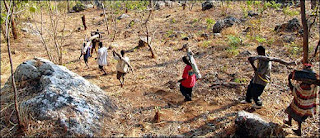In a previous blog, I likened energy to water (or more specifically virtual energy to virtual water). On the whole, we can survive without electricity. I mean, us younger folk who are glued to our phones and various other devices, it may be more of a necessity... but on the whole, we can survive.
This is where the similarities between water and energy diverge. Water is a necessity of life, and when humans decide to live in dry places with limited surface water and also use up all the groundwater, there are issues. Quality and quantity of water is vital, especially for inhabited islands which find themselves in these predicaments. In some regions of the world, tankers of water are used to supplement groundwater supplies to reduce reliance and exploitation of groundwater.
Desalination plants offer a limitless (okay almost limitless) source of freshwater, especially for islands which, by definition, have lots of water around them. They also require vast amounts of energy to evaporate the water to remote the salt. Traditionally fossil-fuel derived electricity has been the go to supply of this required energy, which has unnecessarily high carbon emissions, especially considering if the water supplies were managed more efficiently to begin with, the islands may not have to resort to such lengths.
So, seeing as this blog looks at exploitation and ways around it, can renewables be used to reduce the impact of desalination plants? Well it turns out, yes (woo!!).
Desalination and Renewables
A team lead by Mentis (et al., 2016) looked at designing a tool to design and plan the most efficient size of desalination plant with the available renewable supply. The tool uses an excel interface linked with a local database of the water demand for the region. It requires tourism and domestic population estimates for the next 20 years, along with wind and solar levels, desalination efficiencies, fuel and production costs and taxes and tariffs (Mentis et al., 2016). Finally, a 50% increase in demand is added to the predicted demand value to produce an estimated required supply.
This tool is especially useful across Greek Islands, which currently experience high levels of groundwater salinity and have high renewable resource availability (Prodromidis and Coutelieris, 2011). Compared to the cost of supplying water per m3 of water in Athens (€0.70 per m3), the Dodecanese and Cyclades Island groups pay considerably more (€7.30/m3 and €9.30/m3, respectively), due to having to ship water from the mainland (Mentis et al., 2016). The tool was run using data from 3 Greek islands (two islands from the Dodecanese Island group and one from the Cyclandes Island group). The substitution of fossil-fuel powered desalination plants for renewable-powered (and more specifically solar PV) desalination plants considerably reduced the operational and maintenance costs of either shipping fuel or shipping water. The results of the model show that water costs could range from €1.45/m3 for larger islands to €2.60/m3 for smaller islands.
 |
| Desalination plants are boring... So here are some pictures of Patmos, a Dodecanese Island (I wish I were there!) (Source and Source) |
The results from Mentis' (et al., 2016) work not only show that there are considerable economic benefits, but also environmental benefits, reducing the carbon emissions of the islands and improving the sustainability of the region. In Greece's economic state, this can only be a good thing!
Hope
The model presented in the article shows that renewables are something that can be useful in even the most remote situations. Granted, Greek islands get an unfair amount of sunshine, but the model demonstrates the potential for renewables. In our ever growing carbon- and consumption-heavy world, it's research like this that will ensure the sustainable growth of human populations whilst having a (slightly) lower impact on Earth's resources.








